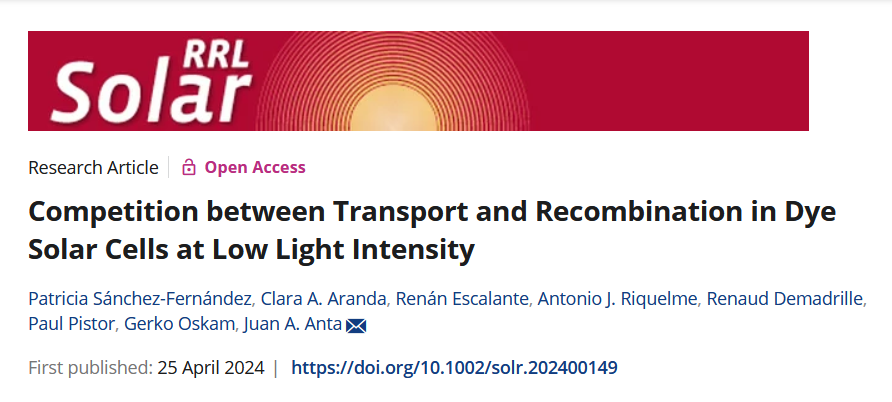Platform-ZERO is thrilled to release its latest publication in Solar RRL!
This article examines how dye-sensitized solar cells (DSCs) perform under different light conditions, particularly low indoor light. It finds that electron collection efficiency drops indoors due to complex electron trapping in the photoanode. Factors like the TiO2 layer quality and electrolyte composition impact this efficiency, showing issues not apparent under strong sunlight.
The efficiency of electron collection in a dye-sensitized solar cell (DSC) is determined by a delicate balance between electronic transport and recombination losses caused by electron transfer to dye cations and electron acceptors. While state-of-the-art DSCs have demonstrated quantitative electron collection under standard 1 sun conditions, the nonlinear nature of the trapping/detrapping dynamics in the photoanode with respect to the stored electronic charge can result in suboptimal performance under the low illumination intensity conditions commonly found indoors. Herein, the key factors influencing electron collection in relation to light intensity using impedance spectroscopy and numerical analysis are thoroughly examined. Impedance analysis reveals that the electron diffusion length tends to decrease as the quasi-Fermi level is lowered, approaching the critical limit (Ln/d ≈ 1) at intensities characteristic of indoor illumination. A range of tert-butyl pyridine concentrations and different thermal and chemical treatments of the TiO2 are tested, showing that this low intensity limitation is inherent to the multiple-trapping mechanism that governs the functioning of a DSC. It is concluded that relatively high ideality factors, nonoptimal electrolyte compositions, or small variations in the quality of the TiO2 layer can result in electron collection limitations that are not apparent under 1 sun but become noticeable at low light intensities.
Read the full paper at https://doi.org/10.1002/solr.202400149.
